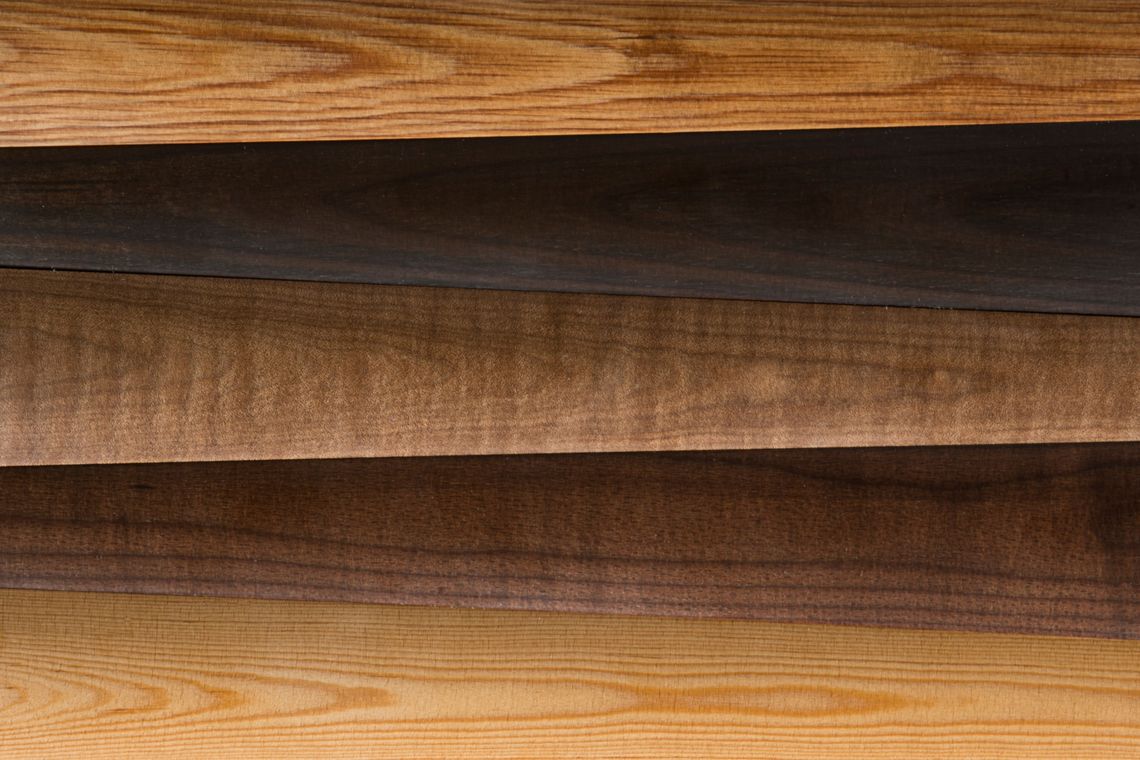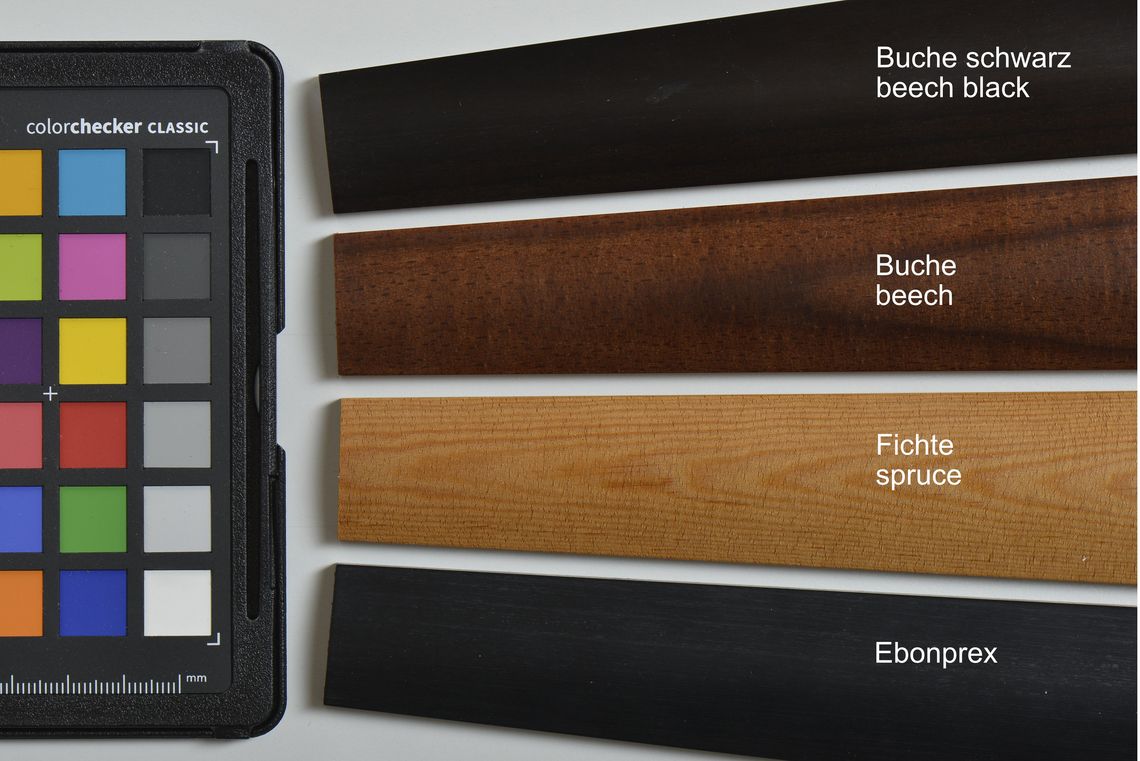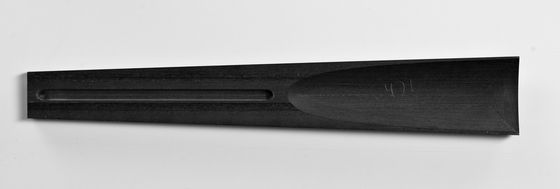
Material parameters
| Sonowood Spruce | Sonowood Beech | Ebonprex | Ebony | |
| Density t/m3 | 1.2-1.4 | 1.2-1.4 | 1.1-1.25 | 0.9-1.2 |
| Compression Hardness (MPa) | >80 | >80 | 60-63 | 40-60MPa |
| E-Module N/mm2 | >30.000 | >21.000 | >21.000 | 12.000-19.000 |
| Signal Speed (m/s) | 5300-6300 | 4500-5400 | 5000-5300 | 4000-5000 |
| Damping (Q) | 80-110 | 70-100 | 100-110 | 80-110 |
Fingerboard specifications
The fingerboards developed and manufactured by Wilhelm Geigenbau are produced to specifications for each of the different instruments of the violin family, and in various materials and designs. The surface is milled precisely so that it must only be sanded.
Dimensions
Dimensions for violin:
length: 270mm
widths: 25.3mm to 43mm
edge thickness: 5.3mm
top/bottom radius 41mm/41mm
maximum depth of hollow under G/E string: 0.7/0.25mm
Dimensions for viola:
length: 315 mm
widths: 25.3mm to 47.5mm
edge thickness: 5.5 mm
top/bottom radius: 39mm/41mm
maximum depth of hollow under C/A string: 0.8/0.35mm
Dimensions for cello:
length: 585 mm
widths: 34mm to 64.5mm
edge thickness: 9 mm
top/bottom radius: 39.5mm/46mm
maximum depth of hollow under C/A string: 1.1/0.7mm
Dimensions for double bass:
length: 890 mm
widths: 45.1mm to 98mm
edge thickness: 10.5 mm
top/bottom radius: 36mm/68mm
maximum depth of hollow under E/G string: 1.6/0.8mm
Special dimensions:
Possible by arrangement.
Choice of materials
Black beech
Sonowood: compressed beech, coloured. Density 1.3
-
visually similar to ebony
-
good workability, slightly more brittle than natural beech
-
less resistant to heat than natural beech: occasional slight movement in finished surface
-
excellent acoustic properties
-
our most popular material for orders
Beech
Sonowood: compressed beech, natural colour
-
visually calm
-
compact material, good workability
-
good dimensional stability – more stable than black beech
-
excellent acoustic properties
-
our workshop favourite
Spruce
Sonowood: compressed spruce, natural colour. Density 1.3
-
visually striking
-
best Sonowood workability
-
best Sonowood dimensional stability; highest rigidity
-
very high sound conductivity
-
best for a brilliant sound
-
most popular with our musician customers
Ebonprex
Unidirectionally-glued beech wood, coloured. Density 1.2
-
visually similar to ebony; great finished surface quality
-
best workability
-
dust from sanding smells unpleasant
-
best dimensional stability, high rigidity
-
prolonged contact with water can lead to slight swelling along glue seams
-
high sound conductivity
-
well-suited to cello and bass fingerboards
-
cheaper alternative to Sonowood
Information for violin makers
The mass, shape and frequencies of the fingerboard plays a major role in the sound quality of the instrument. Thanks to the high rigidity and density of our materials, fingerboards can be made thinner than those made of the lower quality ebony that is found today. We provide detailed data and empirical values with our fingerboards.
With or without glue channel
The glue channel not only helps in gluing the fingerboard, but also reduces the mass which is an advantage for the sound.

